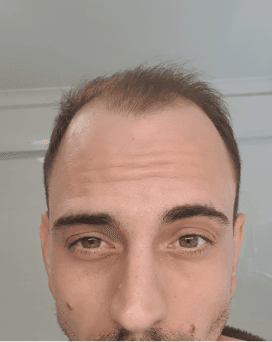
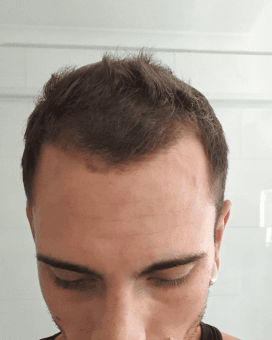
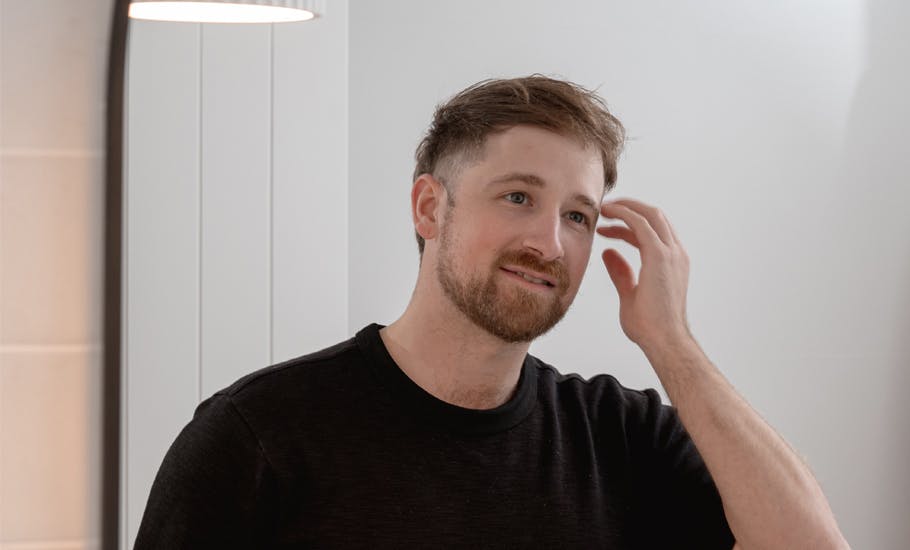
If you’re the guy who has animated conversations with your mates about footy, the latest Marvel movie or even politics, but when it comes to talking about your hair (or lack thereof), you’d rather hide under a rock, then this is the guide for you.
Balding is an incredibly personal experience and one that comes with an unfair stigma. This is your comprehensive guide to hair loss with all its causes, preventions and treatments where we separate the truth from the BS (in an entertaining way) and help you take the right action for you in the most discreet way possible.
So, let’s get started.
Your hair is acting differently. You’re finding it on your pillow and all around the bathroom. When you look in the mirror, it seems finer and you can see more of your scalp.
Your ego starts speaking to you.
“Just when you were getting your s**t together, this happens.”
“Losing your hair means the end of your youth and masculinity.”
“Enter your new persona - that threatening bald guy at the bar.”
Hair loss is probably not something you really paid attention to, and not something you ever thought would happen to you. Let’s be real. How many blokes notice subtle changes in their appearance? You tend not to notice a few extra kilos till you’ve put on about ten, and the same goes for hair loss – you don’t notice it till you’ve lost a bunch.
But here you are.
Panic has set in and you’ve decided to consult Dr Google. The search is broad: Hair loss treatments, Hair loss causes, Preventing hair loss, Thinning hair solutions, Am I balding? Is being bald sexy? Do women like bald men? Is Jason Statham OK with being bald? (um, yes), and Is this the end?
The fear is palpable. It truly feels like major areas of your life are going to change without a luscious mane – your work, your relationships, your sex life, dating, your earning capacity, your social status, and the list goes on. But like most things fear-related, getting informed, knowing your options, and taking action can be exactly what helps turn your fate around.
Significant balding affects about 20% of men in their 20s, about 30% of men in their 30s and nearly 50% of men in their 40s.[1]

As many as 85% of men will have some sort of hair loss in their lifetime, and it can happen for different reasons.[2]

Male pattern baldness (MPB), also known as androgenetic alopecia or androgenic alopecia, is the most common cause of hair loss in men.[3] Up to 95% of guys with thinning hair can blame MPB.
MPB most often begins when a guy is in his 30s or 40s, but it can start earlier in some cases.[4]

Some men view losing hair as a sign of wisdom and maturity, but for many, it can feel like they’ve lost their mojo entirely. Hair is, after all, more than just a beauty asset. It’s very much tied to physical and emotional wellbeing. As a culture, we link hair with youthfulness, health, strength, sexual power and desirability.
According to a 2009 survey by the International Society of Hair Restoration Surgery, almost 60% of men said they would rather have more hair than more money or friends.5 So priority-wise, having hair on your head is right up there! And despite being a widespread issue, balding is still a surprisingly taboo topic of conversation, which means many men suffer in silence.
In the early stages of suffering you might have irrational thought processes and start desperately seeking solutions online. That’s not necessarily a bad thing, but you should also be mindful that it’s the time when you’re most vulnerable to being drawn into the vicious lies of the hair loss treatment industry. Ultimately, choosing to treat or not treat your hair loss is entirely up to you.

"I'm not bald, I'm just getting more head."

"I'm not bald, I'm keeping my hair."
How you choose to view your hair loss is your decision and a mindset shift might be all that’s needed to get comfortable with your new look.
When your inner critic tells you that most people (especially women) have a negative view of bald men, you might like to challenge that thought. The truth is, balding men often find they do better on the dating scene and at work once they shave it all off. Listen to this:
Seen on reddit
"Always did ok, but since shaving almost seven years ago I’ve actually probably done better... I think the stress and anxiety around balding weighs far more heavily on your confidence than owning not having hair."
— MIKET*
Seen on reddit
"Here's what you need to remember. First, girls like confidence. It doesn't matter that I am bald. Many girls will still like me because I embrace it. Next, everyone wants what they can't have. We all aspire to things we can't have, so focus on the things you can have..."
— TOMTOM*
*Names have been changed to protect anonymity
So yeah, embrace your baldness, but if you decide to take action to prevent or even reverse your hair loss, there is absolutely no shame in doing that either. For many guys, feeling good requires looking good too. You may need a hairy head to feel confident and take steps to build the life you want, and that’s totally okay. No matter what your hair care factor is, we just want to empower you to live the life you want.
"The best time to start treatment is when you first start seeing signs of hair loss, such as your scalp peeking through or your hairline receding. Medical treatment for hair loss only works in areas where you still have hair."
— DR AIMEE PAIK

Here you’ll learn about the hair growth cycle and the multiple causes of hair loss from genetics to hormones to illness and medications. It’s a complex area, but we’ll untangle the real causes from the myths.
Like most of your favourite gadgets – your car, phone, or Xbox – they work…until they don’t. The same goes for the hair growth cycle – it follows quite a predictable pattern until something disturbs it. The hair growth phases, which sound like names of a new group of superheroes, go like this.[8]

This is the active phase of hair growth, where 85-90% of hairs are growing at any given time, lasting up to seven years.
Hair growth slows as follicles shrink over a few weeks. Approximately 3% of hairs are in this phase.
The hair follicle is at rest and not growing. Around 6%-8% of hair is in this phase, lasting a few months.
At the end of the resting phase, hair gradually detaches from the follicle and falls out. The average person sheds between 50-100 hairs daily. After exogen, old hair is replaced with new hair in the anagen phase, restarting the cycle. Disruptions in this cycle can lead to hair loss.[4]
When you first start to notice that your hair is thinning you might be quick to blame yourself. Is it the shampoo you’re using? Is that new hair fudge to blame? Have you been wearing a hat too often?
Whilst hair loss can be the result of a number of causes, the most common cause is male pattern baldness (MPB), also known as androgenetic alopecia or androgenic alopecia. That means it’s nothing to do with your shampoo, fudge, or your hat. It's actually to do with the genes you’ve inherited.
“Thanks Mum!” we hear you say. But actually, it’s not just her fault.
Contrary to popular belief, the genes from your father play a role too. What researchers are still unclear about, however, is the exact mode of inheritance and the relative importance of each parent.[10] It’s these genes combined with your hormones and environmental factors that set the stage for potential MPB.
An important distinction: Losing your hair isn’t necessarily the same as going bald. MPB is a genetic condition whereas hair loss can be caused by a variety of factors (which we’ll get into a bit further down).
Without testosterone and DHT, you wouldn’t have any of your manly features, but in a cruel twist, they’re also the hormones that play a big part in MPB. Sucks, right?
In the body, testosterone is converted to its more ‘active’ form, dihydrotestosterone (DHT), with the help of an enzyme called 5-alpha reductase.[11] DHT acts on different organs in the body including the hair follicles.
It’s not the DHT production itself that causes hair loss, but the inherited sensitivity to DHT that causes it.[12] Men with a genetically high sensitivity to DHT will be the first to experience a weakening in their hair follicles.
Essentially, the DHT shrinks the hair follicles as well as shortens the hair growth cycle we talked about above.[13] This causes hair to grow out looking thinner and more brittle, as well as fall out faster. DHT can also make it take longer for the follicles to grow new hairs once the old hairs fall out.
Sometimes the desire to get pumped up at the gym works against blokes that are susceptible to MPB.
Engaging in behaviours that increase DHT production, such as using creatine supplements,[14] resistance and weight training exercise,[15] or taking anabolic steroids,[16] all have the potential to increase hair loss.
Whether you have MPB or not, hair thinning and loss is actually a normal part of ageing for everyone.[17] It’s called involutional alopecia. That’s not to say you’ll lose all your hair as a result of ageing, but as hormones in the body change with age, and the rate of hair growth naturally slows, the number of hair strands on your head will decrease.
Women experience it too, and it’s one reason you’ll notice many older women with thinning hair, particularly after going through menopause.
We all experience some level of stress most days, such as sitting in traffic or dealing with an office worker who chews loudly, but that’s not the kind of stress that will cause your hair to fall out.
It’s periods of chronic or traumatic stress such as dramatic weight loss, illness, or death of a loved one, that can cause hair loss.
Unlike MPB, this is usually a form of temporary hair loss called telogen effluvium.[18] In this instance, follicles are pushed into the shedding and resting phases. Once the stress is under control, however, the hair is likely to grow back over time.
Stress has also been implicated in a condition called alopecia areata – where the body's immune system attacks the hair follicles causing hair loss.[19] But again, once stress levels decrease, hair can grow back.
Finally, trichotillomania is a disorder in which people feel compelled to pull out their own hair as a way of dealing with negative emotions such as stress and frustration.[19]
All these conditions are much rarer than MPB.
Regardless of the effect on your hair, too much stress is not a good thing. It’s important to look after your mental health by eating healthily, exercising, and getting enough sleep. If you’re feeling stressed or overwhelmed, there’s no shame in asking for help from your doctor.
You may be one of those blokes who can get away with eating anything, but if you’re starting to thin on top, it pays to look at your diet.
In the developed world, nutritional deficiencies leading to hair loss are quite rare, but if anything, it’s worth talking about protein and iron.
If you’re deficient in either of these, you could experience hair loss.[20, 21] Vegans and vegetarians may be especially vulnerable.
And if you’re aiming for weight loss, don’t try to get ripped too fast. Crash diets and sudden weight loss can cause telogen effluvium – the temporary form of hair loss.
The good news is that once nutritional deficiencies are corrected and you resume a normal, healthy diet, your hair can grow back.
When you’re carrying a spare tyre – and we don’t mean the one in the boot of your car – it puts all kinds of added strains on your body. Your heart, your joints and your hormones to name a few.
If that’s not enough reason to lose the extra flab, this might be:
Research has shown that a higher Body Mass Index (BMI) may be associated with more severe hair loss in men who already have MPB, especially those who started to bald at a young age.[22]
Ready to forgo that second Big Mac now?
We all know the cancer sticks are bad for you, but aside from them being a major risk to your health, they may also be contributing to balding and early greying.
According to epidemiological studies, the toxins in smoke can harm hair follicles and damage hormones. A report in the journal BMJ found a “significant” and “consistent” link between smoking and early greying.[23]
Further research showed that in a group of 740 men aged 40-91 years, smoking at least 20 cigarettes a day was linked to an increased risk of baldness, even after other risk factors were taken into account.[24]
Whilst the results of this research are in conflict with some other studies and more research is needed, giving up the durries will benefit so much more than your hair.
Popping pills for some common health conditions such as acne, high cholesterol, depression and high blood pressure can (although very rarely) come with side effects like hair loss. And then there’s anabolic steroids. What’s pumping up your guns might be causing you to shed more hair.
The severity of hair loss depends on the type of drug and dosage, as well as your sensitivity to that drug.[25]
The good news is that in most cases, hair loss is reversible once you stop taking the drug.
If you are currently taking any of these medications and hair loss is a concern for you, it’s best to speak to your doctor. Remember, never stop taking a medication before discussing it with your doctor.
Some illnesses can also bring on hair loss[26], such as an underactive or overactive thyroid; eating disorders; iron deficiency anaemia; diabetes; autoimmune diseases such as lupus and alopecia areata; and skin conditions such as psoriasis and dermatitis.
If you’re experiencing hair loss, speak to your doctor to rule out such illnesses.
Hair loss can be a very traumatic experience and affect your self-esteem and confidence, but you’re not alone.

MBP is the most common type of hair loss in men. Here you’ll learn about the signs and symptoms of MPB, how to diagnose it correctly, and how to determine what stage you’re at.
While there's no surefire way of knowing if your hair is about to depart to sander pastures, there are certain early signs of MPB that should have you considering your options.
____
A noticeable change in your hairline. The flat or mildly receded hairline you previously had starts turning into a more obvious M-shaped hairline. For most men, this begins around the temples (sides of the head) and often starts with thinning rather than total hair loss.
Action test:
Pull your hair back and see what shape your hairline is. Also, compare two photos of yourself taken years apart to see whether your hairline has changed over time.
____
Signs:
Your hair is collecting in different places. You may start noticing an excessive amount of hair falling out throughout the day.
Action test:
We don’t expect you to count hairs, but pay attention to the amount of hair collecting on your pillow, brush and in the shower, over time.
____
Signs:
Your hair is thinning out. Thinning can start on the crown (top, back of the head) or be more diffuse (spread around the entire scalp).
Action test:
Use a handheld mirror to check the back of your head or take some selfies of the back and top of your head and compare photos over time.
For diffuse thinning, assess how full your hair looks when it’s wet or in bright lighting.
____
Signs:
It takes a lot longer for your hair to grow and the regrowth is wispy. In MPB, the sensitivity to DHT causes the hair follicle to shrink and weaken (called miniaturisation).[30] This results in the hair becoming progressively shorter and wispier, and it can eventually stop growing altogether.
Action test:
Take notice of your hair growth. Are you starting to need haircuts less frequently? Are certain parts of your hair growing faster than others? Do some areas have finer/wispier hairs than other areas?
On average, people lose around 100 hairs per day, and it’s normal to lose some hair when you shower, brush or comb. But if you start noticing an excessive amount of hair falling out throughout the day – on your pillow, brush, and in the shower – it could be a sign of MPB.
If it’s any comfort, MPB doesn’t happen overnight. Going bald is usually a long and slow process that can take anywhere from a few short years to several decades.
Don’t want to suffer through the process? Then noticing the signs and taking action early is the way to go. The earlier you act, the more hair you’ll be able to save.
MPB gets its name because the hair falls out from the scalp in similar pattern in most guys. It’s one of those things in life that you wish wasn’t so predictable.
As a rule, it starts at the temples and crown of the head, and over time, the two areas eventually meet leaving a U-shaped rim of hair at the back. Think Prince William, Larry David and Dr Phil.
Most men never lose the U-shaped section of hair as this hair is typically less sensitive to DHT,[31] although there are rare cases of men losing all of their hair to MPB.
The Norwood scale is the leading classification system used by clinicians to measure the extent of male pattern baldness. It provides a reference point to diagnose the extent of baldness, discuss treatment options, and measure the effectiveness of treatment. [32]
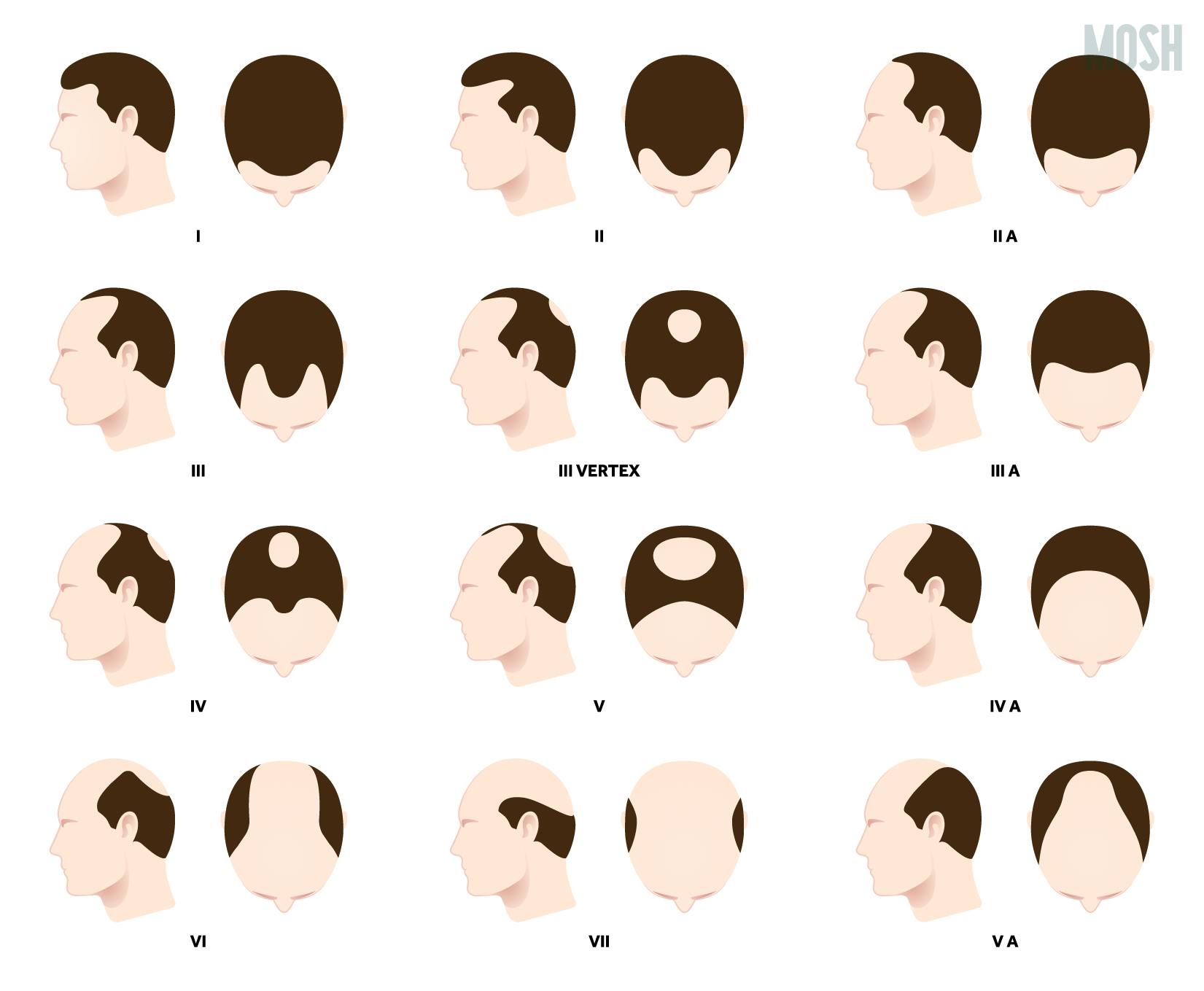
If you’re already seeing signs of balding or receding hair line then you’re essentially playing catchup, but that isn’t necessarily a bad thing. Most men will only notice they have an issue once they get to stage II or III.
The take home message is that as soon as you discover that you’re losing your hair, the best approach is a proactive one.
Male pattern baldness (MPB) is genetic and up to 95% of guys with thinning hair can blame it on this. Unlike some other types of hair loss, MPB causes permanent hair loss if it’s not treated.

Thinking about more serious hair loss treatments and want to know what actually works? This section has it all – from medical and cosmetic treatments to minimally-invasive and surgical interventions. We’ll weigh up the evidence and the pros and cons.
Preventing? Treating? What's the difference?
Prevention and treatment are actually two sides of the same coin, and some treatments that help with prevention can also be used to regrow more hair. We've outlined all the main ways to battle hair loss below.
Dadbods might be the new six-pack, but your hair might not agree.
Hair needs adequate protein, vitamins and minerals to keep its strength and shine. Make sure you get enough of the following as part of a healthy, balanced diet:[33,34,35,36]
And then there’s lifestyle habits…
Research done with balding male twins[37] says that while genetics accounts for most of it, the twin who leads an unhealthy lifestyle increases his risk of more hair loss compared to his brother.
So, get regular exercise, sleep 7-9 hours each night, staying hydrated, quit smoking (if you smoke), reduce your alcohol intake, and manage your stress levels.
Yoga and meditation are great ways to help reduce stress and calm your mind.

We know you’re desperate to hold onto your strands, but be careful where you invest your hard-earned cash.
There are a host of natural treatments on the market claiming to increase scalp circulation and prevent hair loss, but only a few have been evidence-based. Here are some popular ones.
Some small studies[38,39], claim it can help increase hair thickness, but robust research is lacking.[33] The benefits most likely have to do with reduced stress levels as a result of having a massage!
You may have also recognised biotin (vitamin B7) as an ingredient in many hair thickening shampoos and hair loss supplements. There is, however, no clinical trials that have demonstrated that biotin supplementation can help hair loss when there’s no existing deficiency – and biotin deficiencies in the developed world are rare.[20]
Of all the natural treatments on the market, saw palmetto is the most promising, although it still has limited effectiveness compared to medical treatments.[40,41]
An extract of saw palmetto berries may block the enzyme that converts testosterone to DHT, thereby reducing DHT levels (the hair loss culprit).[40]
It can be taken orally, as topical drops, or in a shampoo, but the doses used in shampoos may be less effective.
Saw palmetto is a cost-effective, alternative treatment for men with MPB who are concerned about the greater side effect profile of other medications. It can also be used in combination with other medical treatments.
You can scrub, shave, brush your teeth and may be do a few other things in the shower (which we won’t mention here), so how about managing your hair loss?
While shampoos may offer a slight benefit (depending on what is causing your hair loss) they’re unlikely to be a game changer for your hairline if you have MPB. Combining them with medical hair loss treatments may improve their effectiveness, though.[42]
These are two common ingredients you’ll see in hair loss shampoos.
It’s a great way to wake you up in the morning, but unfortunately it doesn’t work to wake up your hair follicles. Currently, there is no clinically viable evidence that it improves hair growth in MPB.[43]
A small study[44] back in the 90s found that this antifungal drug increases hair density almost as well as minoxidil, but larger more robust research is lacking. It does, however, treat dandruff quite effectively,[45] which some men experience as part of hair loss.
Preventative hair loss treatments are a good place to start, especially if you still have a fair bit of hair on your head. But for MPB, they’ll work better as add-on treatments when combined with more effective and clinical proven solutions.
We’re completely honest about what the evidence says because we want you to find treatments that actually work. However, we encourage you to speak to a doctor to find out the real cause of your hair loss. Treatments will vary depending on the cause.
The Prince Charles kind of combover or a wig are probably not what you consider attractive options for your hair loss. But fear not. There are other hairstyles, products and procedures that can help you disguise your hair loss in a more discreet way…at least for a while.
The last thing your thinning hair needs are products that weigh it down, so get rid of any thick pastes, heavy conditioners or gels, and invest in lighter alternatives or hair thickening products.
Thickening shampoos, conditioners, sprays and powders contain special polymers which plump up the hair shafts to make them look fuller. The effects are only temporary so you'll need to use them regularly, but they can increase hair thickness noticeably. Speak to your hairdresser about your options.
Just because you're losing your hair doesn't mean you don't want to look good. There are plenty of ways to create a trendy, clean, and professional look with thin hair or bald sections of the scalp. There are plenty of haircut for a balding crown to choose from.

The Pompadour
If you’re starting to develop that island of hair at the front of your hair or a thin crown, opt for the swept-back look. Just grow it longer on top, trim it short on the sides, and brush the whole thing back. If you still have some volume, feel free to give it a small part.

The Short Mohawk
This is great if you’re struggling with thinness over the top of their head. Keep the sides nice and tight to make the top look thicker. Use a bit of paste to give it volume and stand up a bit.

The Combover
There is a right and a wrong way to do a combover and it only works if you still have a decent amount of hair.
Grow the hair on the top of your head about ten centimetres and sweep it to the side. Once your hair loss reaches a point where you can see the scalp through your combover, switch to a new style.

The Buzzcut
This style looks good on guys with various degrees of hair loss or recession, and it’s easy to maintain. It's a great way to get used to seeing the shape of your head in the mirror. You can still take steps to recover your hair, but this style will help you become more comfortable with yourself.

The Brushed Forward
If you’re dealing with thinning at the front, you can create the illusion of density by growing it long on top and pushing it forward. This will remove some of the density from the crown of your head, though, so it's not the best hairstyle if you are thinning at the back. Keep the sides short to make the top seem thicker.

The Finger Length
For this style, you cut all of your hair as long as two or three fingers are wide. This gives you enough length to style your hair a little bit, but not so much that you can use it to disguise your hair loss. It’s a great style to ‘connect’ sections of hair that have become separated by gaps.

The Shave
If your hair loss is quite advanced or you’ve just decided to embrace your baldness, go for the shave. It can be liberating!
Get yourself a sturdy straight razor and plenty of razor blades. Stubble becomes visible quickly, so you’ll end up shaving every third day or so.
Remember to invest in sunblock or a hat for sunny days. Sunburn on your head is no joke!
If you’re serious about saving your hair in a cost-effective way, this is a path you’ll want to consider.
Of all the medical treatments, this one appears to be the most effective for the least side effects.[46]
It’s most commonly used as a topical foam or spray and works by widening the blood vessels, allowing more blood, oxygen, and nutrients to the hair follicle to slow hair loss and promote hair growth. It won’t stop the onset of MPB, but it can be very effective in the early stages of MPB, and even more effective when used in combination with other medical treatments[47,48,49]
But here’s the thing…
When you first start using minoxidil, you’ll actually have an increase in hair shedding for some weeks before you see any benefit from the treatment. This will likely freak you out, but the hair will grow back again if you can push past that phase. Some scalp irritation is also possible.
Australian law prevents us from mentioning certain treatments until you’ve spoken to a doctor, so it’s in the vault for now.
What we can say, though, is there is a evidence-based way to halt (and in some cases reverse) hair loss in the majority of men with MPB.[50] When used in combination with other products such as minoxidil, it can be even more effective.[47,48,49,51]
Curious? Arrange a discreet online consultation with a medical practitioner to determine if this treatment is an option for you.


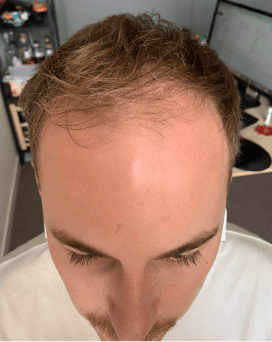
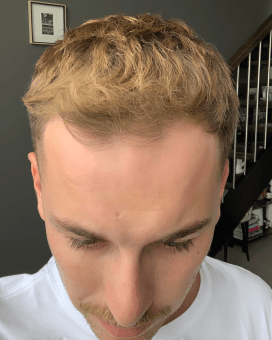
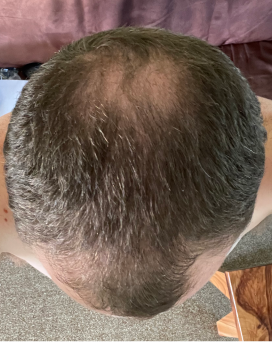
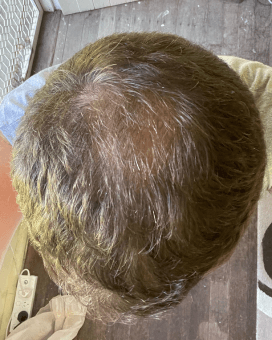
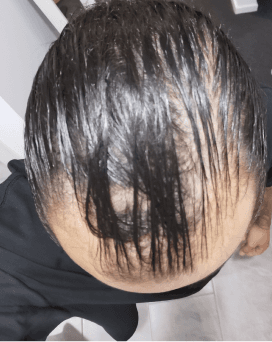
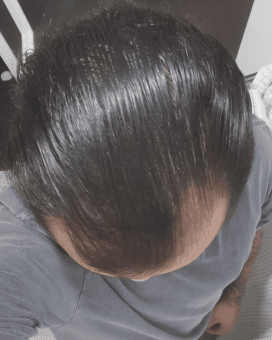
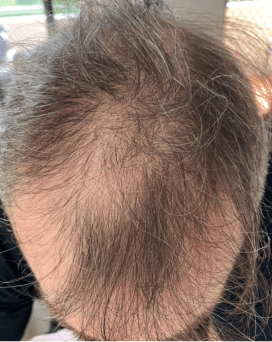
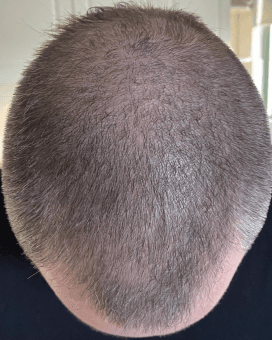
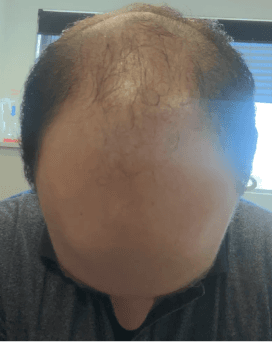
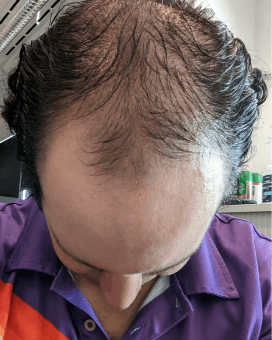
Medical hair loss treatments have good success in men with MPB, but they aren’t a cure and they can take several months to a year to take effect. Once the medications are stopped, hair loss will start again, so choosing this path means a long-term commitment to treatment.
If there was a hair loss therapy for intergalactic superheroes, this would be it.
It’s a non-surgical treatment that works by exposing the scalp to a low level of red or near infrared light.
Researchers think it works by stimulating stem cells in the hair follicle and shifting them back into the growth phase of the hair cycle. The possible result is an overall improvement in the length and thickness of the hair.[52]
Some studies have shown that it’s effective in the short term (when used consistently over several months), but more research is needed to determine its effectiveness compared to other more established treatments, and in the long term.[53,54]
The best thing about LLLT is that it can be done at home using a purchased LaserComb or wearing a laser helmet for a certain amount of time, every second day. It’s painless and has not been shown to have adverse effects.
Cost-wise, a laser comb or cap can set you back several hundreds, if not thousands, of dollars. So, while it might be an alternative to medical treatments, it’ll create a significant hole in your back pocket and it requires commitment and patience to see results.
These one’s aren’t quite surgery, but they do involve blood (which we only really like in movies), and they aren’t cheap.
Tatts are in fashion, but hair tatts? You might need some time to digest that idea.
This procedure uses microneedles to tattoo pigment into the scalp. It creates the appearance of tiny hair follicles to restore the look of a fuller head of hair. A skilled practitioner works to ensure the dots look like a natural hair follicle and blend in with your complexion.
But having this procedure is not a decision you’ll want to make lightly. Treatments can cost in the thousands of dollars, and depending on the amount of hair loss you have, can take several sessions.
It’s a permanent procedure that requires you keep your hair very short to take full advantage of the look, and the pigment can also fade over time with sun exposure.
This one makes us squirm a little bit.
It’s a procedure that involves the use of a skin roller with small needles that cause minor skin injuries to the scalp. The process of creating tiny skin wounds is thought to regenerate the health of the hair follicles and result in new hair growth, or perhaps thicken thinning hair.[55]
While it’s shown some promise for improving hair growth in some small studies, more research is needed.[56] If it’s combined with other therapies such as topically applied minoxidil, it may help the treatment be absorbed better into to the scalp.[57]
Microneedling can cost in the hundreds of dollars per session, and several sessions may be needed.
It can make the scalp red and inflamed for a few days following the procedure, and there is a risk of infection and scarring.
Also known as Vampire PRP Hair Growth this is one of the hottest new treatments to become available, partly made famous by Kim Kardashian (don’t ask). It uses your own blood to help restore hair growth in thinning areas.
Essentially, a sample of your blood is collected (just like a normal blood test) and it is put in a centrifuge machine to separate your blood components. The platelet rich plasma part of the blood is then injected into your scalp with the hope of reviving dying hair follicles.
Although PRP has a good scientific basis to support its use in hair restoration, it’s a treatment that is in its early days and the clinical (in practice) evidence is still weak.[58]
You’ll typically need three treatments in a 4–6-week period, with maintenance treatments every 4–6 months.
Whilst the procedure itself is fairly quick with no downtime, it’s pricey (in the thousands of dollars) and there are risks such as infection, scarring and damage to blood vessels or nerves. [58]
We’re not going to delve too deep into this option for three reasons:
1) it’s too expensive for many men to consider,
2) it carries significant risks, and 3) it’s a major and personal decision that should be made only after consulting a good doctor.
Various hair transplant techniques are available, but they all involve taking areas of the scalp that have active hair (usually from the back and sides of the head) and grafting these pieces of skin onto bald or thinning areas of the scalp.
It’s the most invasive and expensive treatment for hair loss, and can cost in the tens of thousands of dollars. Multiple treatments are often necessary, and the procedure carries the risk of scarring and infection. The upside is that the result looks quite natural, if it’s done well.
Don’t be fooled though. Hair transplantation doesn’t necessarily provide a one-off definitive treatment for MPB. Even after a successful treatment, maintenance medical treatments are often recommended in the long term to prevent thinning of the hairs that are not yet affected by MPB.
You’ll need to consult with a doctor (or a few) to determine if you’re a suitable candidate for this surgery. In general, the best candidate is someone who has had hair loss for a number of years but it has stabilised and they are not losing more hair quickly.
There is no cure for MPB but there are a host of prevention and treatment options available including natural and cosmetic solutions, and medical and surgical options.

The elusive cure for balding is still just that – elusive. But as long as there are men (and women) who will do anything to save their hair, science will continue to search for breakthrough treatments. And they could be available sooner than you think.
In this chapter delve into the most promising ones.
Stem cell hair transplants offer hope for people who aren’t candidates for the hair loss treatments currently available, but research and application of the procedure is still in its early days.
Cells in the body have specific purposes, but stem cells are cells that do not yet have a specific role and can become almost any cell that is required[59]. They can also divide to produce more of the same type of stem cell.
Because of their unique abilities, stem cells have the potential to help repair and replace damaged tissues in people who need, for example, organ transplants, skin grafts after severe burns, and in this case, new hair.
The ultimate goal amongst scientists is to create “hair farms”, where hair is grown after extracting stem cells from a person’s skin or blood and those are then implanted into the area where a person’s hair follicles are dormant[60].
Following lab studies done using human tissues, some hair loss clinics in the US and the UK have started performing these procedures investigationally, despite not being approved by their medical regulatory bodies – the FDA and MHRA, respectively.
It’s similar to a traditional hair transplant, but rather than removing large areas of the scalp with active hairs, it only requires removal of a small skin sample[61]. These small samples of skin contain hairs and fat that are rich in stem cells, from which whole hair follicles can be grown.
The skin samples are placed into a centrifuge and spun at high speeds for a minute to extract hundreds of thousands of stem cells. They’re then mixed with saline to produce a clear liquid that is injected into the scalp[61].
According to Dr Ioannis Liakas in the UK who has performed this procedure, the injected stem cells not only grow new hair, they may also trigger a new growth phase in dormant follicles, taking them back to the beginning of their growth cycle[62].
Given the infancy of the procedure, there's very little information about the side effects, but similar to the traditional hair transplant, there is a likely risk of scarring and infection at the site of the samples and the injections [61].
Again, it's hard to know the success rate of the treatment so early on, but one small Italian study conducted in 2017 showed a 29% increase in hair density 23 weeks after the final treatment [63]. More studies need to be done to determine long-term success of the treatment.
No standard price has been established yet, but some of the clinics involved in the investigational therapies are charging anywhere from US$3,000 to US$10,000 [61]. So, it might be a promising treatment, but only for those who can afford it!
This innovative method was developed by a team of researchers from the Columbia University Medical Centre in New York.
It’s another procedure that involves a hair transplant, but the way the hair is harvested is a little different. Instead of relying on human skin, it uses 3D printing methods, which, unlike traditional hair transplants, means success is not limited by the number of donor hairs a person has.
Despite what it sounds like, hair is not actually printed with a 3D printer (although there is one company in the US who makes hair prostheses using a 3-D printer).
In this instance, researchers used the 3D printer to make a special mould with projecting extensions half a millimetre wide, which mimic the exact shape of hair follicles64. Such thin projections – made possible because of the printer – were critical to the success of the procedure.
Using the mould, the researchers created a microenvironment exactly like the natural environment that human hair follicles grow in. Human skin was grown around the mould, hair follicle cells collected from human volunteers were placed inside, along with keratin-producing cells, and finally, various growth factors were added. This combination stimulated hair to grow within three weeks[65].
According to Medical News Today[65], the researchers say the process is far from perfect, so more work needs to be done in the lab before clinical applications start.
An article in the Guardian[66] pointed out that there are still some aesthetic challenges to be overcome, such as how to pigment the hair and how to create the right texture – straight or curly. Hair follicles grown on the scalp get signalled naturally with which colour and texture to have, but hairs grown in a dish lack that signalling.
Such problems need to be solved before hair is injected into a patient’s scalp and then time will tell whether the treatment is safe and cosmetically pleasing.
So, whilst the timeframe is unknown and there are still problems to solve, the research has the potential to establish a sustainable source of natural hair for transplants in the future. The engineered follicles could also be used by the pharmaceutical industry to screen for new hair growth drugs.
The same team of researchers who developed the 3-D printing hair growth model also discovered a new potential therapeutic pathway, called JAK-STAT signalling, for treating hair loss disorders[67].
JAK-STAT is active inside the stem cells of resting hair follicles and keeps them in a dormant state. By applying a topical JAK inhibitor to mice skin, the Columbia researchers demonstrated a way to reawaken resting hair follicles in mice[67]. Since then, a biotech company have successfully completed a phase 2 trail in humans[68].
The Columbia researchers’ latest studies have looked in further detail at factors that control the JAK pathway activity in the hair follicle. They revealed a previously unknown immune-related cell type that produces a substance known as Oncostatin M that keeps the follicles in a state of dormancy. They named these new cell types, trichophages.
It’s possible that by using small molecule inhibitors and antibodies to block a specific receptor on the trichophages, the researchers could block the flow of Oncostatin M and restart the hair cycle.
Discovery of the JAK-STAT pathway and tricophages may lead to new hair loss treatments. Both these pathways act independently of the male hormone pathways, which existing drug treatments target, meaning they could be effective for both men and women.
In the 1980s, cyclosporine A was approved for medical use as an immunosuppressant in patients receiving organ transplants.
As with all drugs, it comes with possible side effects, one of which was enhanced hair growth. This led researchers to investigate the mechanism behind this specific side effect as a potential for treating hair loss.
As reported in New Atlas[69], a 2018 study[70] conducted at the University of Manchester’s Centre for Dermatology Research found that Cyclosporine A reduced the expression of SFRP1, a protein that negatively regulates a key pathway crucial for the growth of hair follicles. So, suppressing this protein seemed to explain how Cyclosporine A enhanced hair growth.
The next step was to find a way to specifically antagonise SFRP1 and the research uncovered a compound called WAY-316606.
Originally developed to treat osteoporosis, it was discovered that WAY-316606 targets similar mechanisms to Cyclosporine A but without the broader immunosuppressive actions of that drug.
Tests using human scalp samples revealed WAY-316606 enhanced hair growth, suggesting external application of it, or a similar compound, could be an effective hair loss treatment.
According to New Atlas, it’s still early days in the research process. The next step will be a clinical trial (in humans) to determine whether the drug or similar compounds are both safe and effective in hair loss patients.
The future looks bright for men suffering with hair loss.

All this information is overwhelming right!? So, we’re going to help you make a rational decision about your next steps. Here are three factors to consider when deciding on hair loss treatments.
There’s a mountain of hair loss treatment options that could have you umm-ing ahh-ing about what to choose, but your choice becomes a lot easier if you narrow down the ones that are the easiest or most practical for you to use and that best fit into your lifestyle.
For example, an oral medication or supplement is a lot faster and easier to take than using LLLT.
If you choose a treatment that isn’t easy enough for you to use, you’re unlikely to stick with it consistently, which will affect your results.
Us blokes like to take risks every now and then, but probably not so much when it comes to hair loss treatments.
Take the time to discuss all the possible side effects of the treatments you are considering, with your doctor. Your individual medical history – and even prior experience with some of the treatments – will also help you narrow down the most suitable treatment option for you.
This is called efficacy, and has to do with how effective a treatment is. For example, a treatment may be natural and have few side effects, but it may not be as effective at treating hair loss as the medical options. Furthermore, just one treatment alone may not be as effective as combining treatments.
Need a guiding hand with all this stuff? You’ve come to the right place.
Choosing whether or not to treat hair loss is entirely up to you. Embracing your baldness is perfectly fine too!
When evaluating your treatments options, consider ease of use, safety and efficacy.

This is the bit where we give ourselves a plug, because, well, we think we’re worth it and we’re sure you’ll think the same if you decide to come on board.
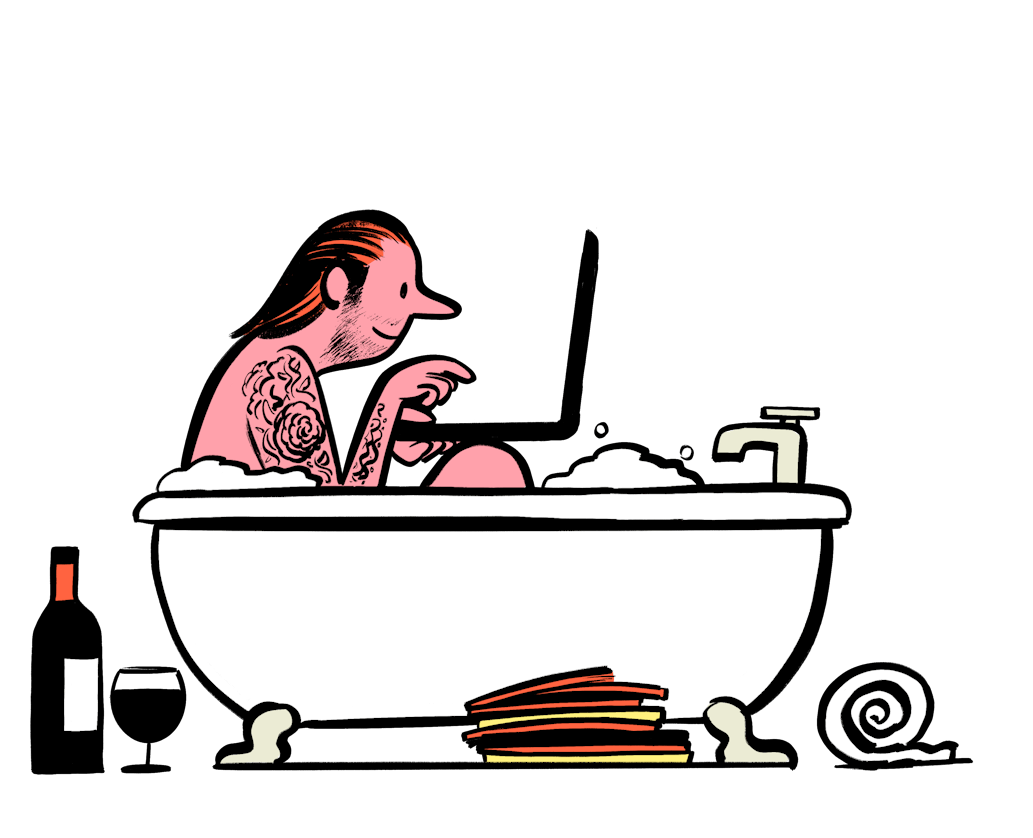
To start answer some simple questions about your health and medical history. One of our health practitioners will read your responses and recommend a personalised treatment plan.
A brief, private call with a health practitioner. Ask anything and confirm the treatment plan is right for you.
Prescription medication delivered from pharmacy to your door. Cancel any time without fees.
For MPB, the trick for holding onto your hair is to start treatment early. The sooner you start the more hair you can save.

Ready to Treat Hair Loss?